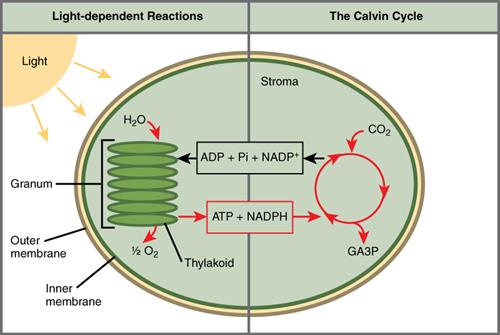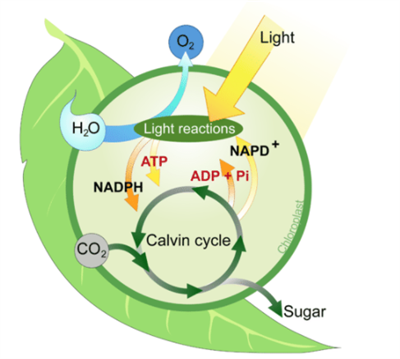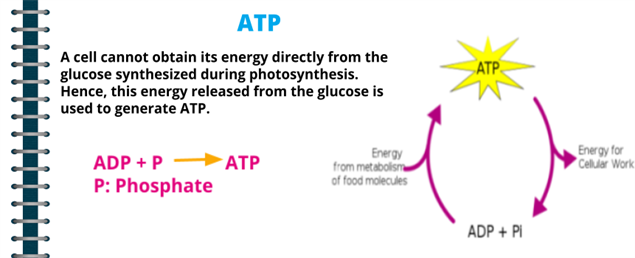PDF chapter test TRY NOW
The mechanism of photosynthesis takes places two sequential stages:
- The light dependent reactions and
- The light-independent reactions ( cycle or Calvin cycle).
As we have learnt, the process of photosynthesis and its various stages occurs inside the chloroplast. Hence, the structural organization of chloroplast is in such a way that the light-dependent
(Light reaction) and light-independent (Dark reaction) occur at different sites in the chloroplast.
(Light reaction) and light-independent (Dark reaction) occur at different sites in the chloroplast.

Picture indicating the sites of light and dark reactions
1. Light dependent reactions (Hill reaction/Light reaction):
It is also known as Hill reaction as it was discovered by Robin Hill in the year 1939.

Light reactions
- Light-dependent processes occur in the thylakoid membranes (grana) of the chloroplasts and require a constant source of light energy.
- The overall goal of these reactions is to transform light energy into chemical energy.
- Hence, in these reactions, the photosynthetic pigments absorb the light energy and convert it into
chemical energy ATP and NADPH_2. - These light reaction products pass from the thylakoid to the stroma of the chloroplast.
Abbreviations to know:
ATP | Adenosine Triphosphate |
ADP | Adenosine Diphosphate |
NAD | Nicotinamide Adenine Dinucleotide |
NADP | Nicotinamide Adenine Dinucleotide phosphate |
NADPH | Nicotinamide Adenine Dinucleotide phosphate (reduced form) |
Fact:

Reference:
https://commons.wikimedia.org/wiki/File:Figure_08_01_06.jpg
https://commons.wikimedia.org/wiki/File:ATP_Cycle.svg
